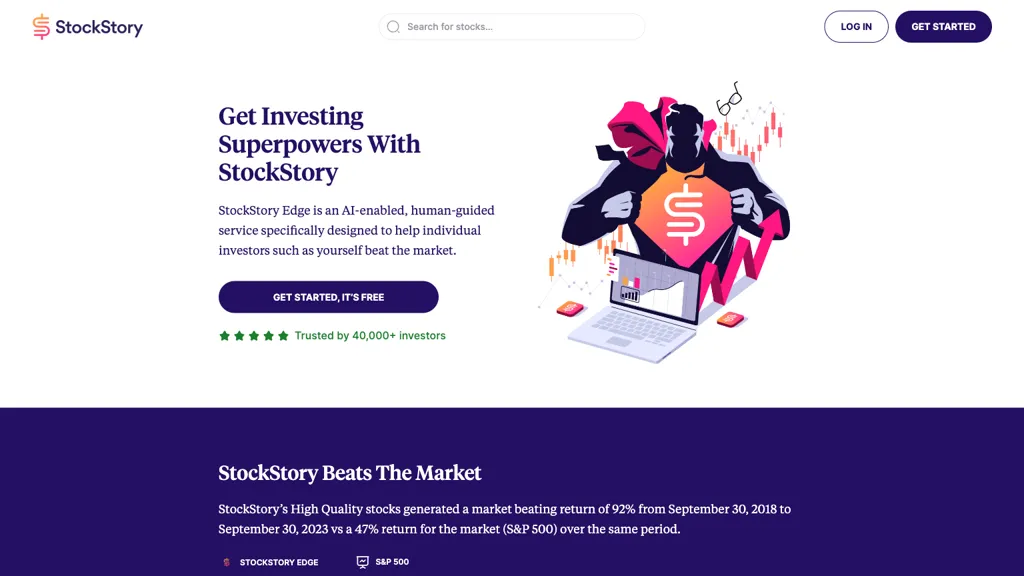20 Excellent Suggestions To Picking AI Stock Picker Analysis Sites
20 Excellent Suggestions To Picking AI Stock Picker Analysis Sites
Blog Article
Top 10 Suggestions For Evaluating Ai Trading Platforms Based On The User Interfaces They Provide And Experiences
The User Interface (UI) and the User Experience (UX) of AI platforms for predicting and analyzing stocks play a critical role in making sure that they are efficient, usable as well as general satisfaction. Even the AI models are reliable, a poorly designed interface may hinder decision making. Here are 10 top tips for evaluating the UI/UX.
1. The ease of use and the user-friendlyness are important factors to consider.
Navigation: Make the platform easy to use with clearly defined menus and buttons, as well as workflows.
Learning curve: Determine how fast an individual can be able to learn and utilize a system without lengthy instruction.
Make sure you have consistent designs (e.g. color schemes and buttons) across all platforms.
2. Look for Customizability
Dashboard customization: Take a look for the possibility of being able to modify dashboards to show the relevant information, graphs, and metrics.
Layout flexibility: The platform should let users rearrange, resize or even move widgets.
Themes and preferences: See whether the platform has dark or light modes or other visual preferences.
3. Visualize Data
Chart quality: Ensure the platform is high-quality and offers interactive charts (e.g., line charts, candlestick charts) with zoom and pan functions.
Visual clarity: Verify that the information is clearly displayed, including correct labels and legends, tooltips and so on.
Real-time updates: Verify if visualizations change in real time to reflect market changes.
4. Test Speed and Responsiveness
Loading times: Ensure your platform loads fast even when dealing with large databases or complicated calculations.
Real-time performance: Confirm that the platform is capable of handling data feeds immediately without lags or delays.
Cross-device compatible: Verify that the platform runs seamlessly on every device including mobile, desktop and tablet.
5. Examine accessibility
Go through the mobile app to see if it offers all of the features you require to conduct business on the move.
Keyboard shortcuts - Make sure the platform is equipped with keyboard shortcuts that are available to power users.
Accessibility features. Check the platform's conformity with accessibility standards.
6. You can search and filter your results.
Search functionality Users are expected to be able search for stocks, indices or other securities.
Advanced filters: Find out if the user can apply filters to narrow results (e.g. by capitalization, sector, or performance metrics).
Saved searches. Verify the platform's ability to allow users to store frequently used search terms or filters.
7. Make sure you are aware of alerts and other notifications.
Customizable notifications: Users can create notifications that are specifically tailored to the conditions of their needs.
Notification Delivery: Examine to determine if notifications are delivered in a variety of methods (e.g. via SMS, email, or app notifications).
Timing: Check if alarms are set promptly and precisely.
8. Evaluation of Integration with Other Tools
Broker integration: Ensure the platform integrates seamlessly with your brokerage account to allow simple trade execution.
API access: Find out if advanced users can access the API to build their own custom tools or workflows.
Third-party platforms: Make sure to find out if your platform has the ability to integrate with other applications (such as Excel Google Sheets or trading bots).
9. Review the Support and Help Features
Take a look at the onboarding instructions.
Help center. Check that your platform has an extensive help center.
Customer support - Check whether the platform offers an efficient support (e.g. email, live chat).
10. Test Overall User satisfaction
Feedback from users Reviews and testimonials from research conducted to determine the level of satisfaction overall with the UI/UX.
Trial period for free: Test the platform for free and evaluate its usability.
Check for error handling.
Bonus Tips
Aesthetics. While practical design is essential but a visually appealing design can improve user experience.
Testing the performance of the platform under extreme stress to ensure that it is flexible and stable in times of high volatility.
Find active forums and communities. Users can post their thoughts and suggestions on these forums and communities.
Use these suggestions and you will be able to evaluate the UX/UI of AI-powered stock prediction/analysis trading platforms. They'll be user-friendly, efficient, and will also meet your needs in trading. The UI/UX of a trading system can have a significant impact on your ability to make informed trades and take the most effective decisions. Take a look at the recommended ai stocks recommendations for blog info including stock ai, best ai trading software, ai investment app, best ai for trading, ai investing, ai investing app, ai stock picker, stock ai, ai trading tools, ai for trading and more.
Top 10 Tips To Evaluate The Risk Management Of Ai Stock Predicting/Analyzing Trading Platforms
Risk management plays an essential part in any AI-based platform for trading stocks. It safeguards your investment by minimizing possible losses and enables you to maximize profits. A platform that is equipped with powerful tools for managing risk will assist you in navigating unstable markets and help you to make informed decisions. Here are the top ten tips to assess the risk management capabilities of these platforms.
1. Review Stop-Loss Features, Take-Profit Features
Customizable Levels: Be sure the platform allows you to set individual stop-loss levels and take-profit targets for strategies or trades.
Find out if your platform supports trailing stop which automatically adjusts as the market moves towards your.
Guarantees on stop-loss: whether the platform offers stop-loss guarantee, which will assure that your trade will be closed at a specified price in even volatile markets.
2. Effective Tools to Assess Position Size
Fixed amount: Check that the platform you are using permits you to set the size of your position in accordance with a set amount.
Percentage: Determine if you are able to set your position sizes in proportion to the value of your portfolio. This will allow you to control risk more effectively.
Risk-reward ratio: Check whether the platform allows setting risk-reward ratios on individual trades or strategies.
3. Check for Diversification support
Multi-asset trading : Ensure that the platform you choose to use allows you to trade across a variety of asset classes, like ETFs, stocks, as well as options. This will help diversify your portfolio.
Sector allocation: Find out if the platform provides tools for monitoring and managing exposure to sectors.
Geographic diversification: Verify if the platform supports trading in international markets to spread the geographic risk.
4. Controlling leverage and margins
Margin requirements: Make sure the platform clearly outlines the margin requirements for trading leveraged.
Go through the platform to see whether it lets you limit leverage in order to limit risk.
Margin calls: Verify if the platform is able to provide timely margin call notifications to prevent account liquidation.
5. Assessment and reporting of risk
Risk metrics. Make sure your platform is equipped with the most important risk indicators (e.g. VaR, Sharpe Ratio, Drawdown) relevant to the portfolio you are managing.
Evaluation of scenarios: Ensure that the platform you're using lets you simulate market scenarios and evaluate the risk.
Performance reports: Check whether the platform offers comprehensive performance reports, which include the risk-adjusted return.
6. Check for Real-Time Risk Monitoring
Monitoring of your portfolio: Make sure the platform you use allows you to track your portfolio in real time.
Alerts: Check if you can receive real-time notifications for associated with risk (e.g. Stop-loss triggers, breach of margins).
Risk dashboards: Check whether the platform has customizable risk dashboards to provide a comprehensive view of your risk profile.
7. Test Stress Testing and Backtesting
Test for stress: Ensure that the platform will allow you to stress test your strategies or portfolios during extremely difficult market conditions.
Backtesting. Verify that the platform allows for backtesting, which involves the use of historical data to assess risk and performance.
Monte Carlo Simulations: Check if the platform utilizes Monte Carlo simulations in order to model and assess various possible results.
8. Risk Management Regulations Compliance Assessment
Compliance with regulatory requirements: Make sure the platform meets the applicable risk management regulations in Europe as well as the U.S. (e.g. MiFID II).
Best execution: Check to determine if your platform is following the best execution practices. This ensures that trades are executed at the most efficient price, minimizing the chance of slippage.
Transparency: Make sure that the platform offers transparency and clear disclosures of risks.
9. Examine for Risk Parameters that are user-controlled
Customized risk rules: Check whether your platform lets you create custom risk management guidelines (e.g. maximum daily loss or maximum position size).
Automated risk controls: Determine whether the system can automatically enforce risk management rules based on your predefined parameters.
Manual overrides: Make sure to check if the platform allows manual overrides to automate risk controls in case of emergencies.
Reviews of User Feedback and Case Studies
User reviews: Examine feedback from users to assess the platform's effectiveness at risk management.
Case studies: Search for testimonials or case studies which highlight the platform's capabilities in the field of risk management.
Community forums: See whether the platform has an active user community where traders share risk management tips and strategies.
Bonus Tips
Free Trial: Try out the platform's features for risk management in real-world scenarios.
Support for customers: Ensure that your platform has a robust assistance for any questions or issues related to the management of risk.
Educational sources: Find out whether your platform has instructional materials or tutorials which explain risk management strategies.
With these suggestions to evaluate the potential risk management capabilities of AI stock predicting/analyzing trading platforms, ensuring you choose the one that can safeguard your investment and reduce possible losses. It is vital to utilize effective risk-management tools to be able to navigate volatile markets. Have a look at the top one-time offer for free ai stock picker for site recommendations including can ai predict stock market, ai in stock market, ai investment tools, stocks ai, stock predictor, ai tools for trading, ai stock investing, chart analysis ai, best ai stocks, ai stock investing and more.